#animal extinction
Text
29.12.2023 | Petitions for the environment and climate change.
Please read, share wherever you can, talk about them and if you can afford it, please, please, please donate - consider taking up a collection among your friends.
Actions.eko.com: Nestlé and P&G: Stop setting Indonesia’s rainforests on fire
Indonesia’s forests are burning – a thick toxic haze suffocates half of the country, keeping children out of school and forcing people and animals to relocate. But it didn’t happen by accident and we know who the arsonists are. Together, we will hold them accountable.
Nestlé and Procter & Gamble are doing business with rogue palm oil and paper producers who recklessly burn precious rainforests to the ground to expand their monocultures, steal Indigenous lands, and drive orangutans, rhinos, and elephants closer to the brink of extinction. (keep reading)
Rainforest Action Network - RAN: This one is for donating, they need 100,00$ by December 31!
We urgently need your help to fight for the world's last rainforests in 2024 by making any size donation today. Those who believe they can change the world are the ones that do. Donate now.
Help us challenge mega-corporations like Liberty Mutual, Bank of America, Procter & Gamble, Nestlé and Mondelēz. Their thirst for endless profits contributes to the widespread destruction of irreplaceable rainforests like the Leuser Ecosystem of North Sumatra and the Amazon rainforest and fuels the expansion of dangerous fossil fuel projects that choke the life out of the planet.
For a small organization, RAN's significant impact is only possible because of dedicated supporters like YOU. Your generous donation today makes a world of difference.
Rainforest Rescue: DRC: Do not sacrifice Congo's rainforests to the oil industry!
The DRC government in Kinshasa is nearing a point of no return: President Tshisekedi wants to sacrifice vast areas of Congo rainforest and peatland for oil. This would be an unmitigated disaster for the climate, biodiversity and local people. Together with our African partner organizations, we can put a stop to these plans.
The rainforests of the Congo Basin are home to millions of people and countless animal and plant species, including chimpanzees, bonobos and gorillas. They are a treasure trove of biodiversity and crucial to the fight against climate change.
Despite this, the government of the Democratic Republic of Congo (DRC) began auctioning 27 oil and 3 gas blocks in late July. The blocks cover some of the last remaining intact forests on Earth.
Three of the blocks overlap the Cuvette Centrale peatlands, which are estimated to store 30 billion tons of carbon, the equivalent to one years’ worth of global emissions. The peatlands are so vast and remote that little is known about the biodiversity at stake there. Nine oil blocks overlap protected areas.
More than half of the Congo Basin's peatlands and 60 percent of its rainforest are in the DRC, the country plays a key role in the fight against the climate crisis.
The science is clear: the governments of the world must cut carbon emissions in half within the next eight years.
In his speech at the UN's COP26 conference in Glasgow, President Tshisekedi promoted the vital role of the Congo Basin forests in regulating the global climate and his intention to enhance DRC’s energy mix by "combining several types of energy: biomass, hydro, solar." The cost of not doing so, he said, would be a climate crisis.
The world cannot afford any further expansion of oil and gas. According to the International Energy Agency (IEA), an immediate end to new investment in fossil fuel supply projects is the first step to keep global warming below 1.5°C and achieve global net zero emissions by 2050.
In an alliance of environmentalists from Africa and around the world, we want to keep the oil in the ground and the fossil fuel industry out of the Congo Basin. Please sign our joint petition!
DR Congo: Stop the destruction by miners and loggers in Tshopo!
The Democratic Republic of the Congo is home to the second largest area of rainforest on Earth. Defending it is crucial to the fight against climate change and the extinction crisis. Yet miners are polluting rivers and loggers clearing forests in Tshopo province. In the small town of Basoko, local people are fighting back.
The people of the small town of Basoko fear for their health and livelihoods: the Aruwimi River, a tributary of the Congo, has been polluted ever since the Chinese mining company Xiang Jiang Mining began dredging for gold there. Some species of fish have disappeared completely. Skin diseases are on the rise.
"We say NO to mining in Aruwimi, which is destroying our ecosystem in an anarchic way," states a memorandum to the county government read during a demonstration. On March 11, 2022, residents of the region protested on land and with boats against the trashing of their environment.
Mining is not the only threat to nature in Tshopo province: companies such as FODECO, Congo Futur and SOFORMA are reportedly logging at a breakneck pace near Basoko.
"They are systematically plundering the forests without any benefit to local people," says Jean-François Mombia Atuku, chairman of the environmental protection organization RIAO-RDC. "Anyone who demands accountability is silenced," he said, adding that workers are "kept like slaves" in the forest. "Human rights are not relevant for these companies."
The grievances regarding mining have been heard in the capital Kinshasa: In January 2022, Environment Minister Eve Bazaiba called on Xiang Jiang Mining to cease operations by February 25, 2022. However, nothing has changed since then – the company is still operating, apparently unimpressed.
"What we need now is international pressure," says Jean-François Mombia Atuku. It must be brought to bear on President Tshisekedi, who positioned his country as a heavyweight in the fight against the climate crisis during the COP26 climate conference.
It’s time to apply that international pressure – please sign our petition.
#long post#signal boost#environment#climate change#rainforests#Indonesia#Congo#Democratic Republic of Congo#donations#petitions#climate crisis#mining#Congo Basin#COP26#Glasgow COP26#defending the Earth#defending the planet#animal extinction#animal conservation#forest conservation#nature conservation#my posts
9 notes
·
View notes
Text
I am currently working on a project for a club I am a part of, known as the TED Ed Student Talks program. I am trying to get a large number of responses for this form so I can include the data gathered in my project!
The subject matter is about the 6th mass extinction we are currently facing and the decline in the number of animals seen on the day to day. In the end, the data will be compiled into my Talk to, hopefully, show the decrease of biodiversity throughout the globe
Please consider filling out the form below to help me out!
3 notes
·
View notes
Text
"However, it was met with scepticism by some. “It’s obviously welcome that the UK starts to think about putting money on the table, but we all know this is nothing like what’s needed – either to address the nature crisis or to unlock the diplomatic process,” said Craig Bennett, CEO of Wildlife Trusts, who is at Cop15."
#animal extinction#endangered species#biodiversity#cop15#jail climate criminals#we want climate action now#climate criminals#climate crisis#climate change#klimawandel#klimakatastrophe#qihou bianhua#changement climatique#cambio climático
12 notes
·
View notes
Text
me, after watching Avatar 2: realized that im these water type of Na’vi, who feels kinship with animals and feels empty after their death, especially now, when 70% of the animals have disappeared from earth.
#avatar 2009#avatar the way of water#I always knew that im different#animals#animal disasters#animal extinction#pain#harsh reality#fuckin humanity#sad#tears#empty without animals#animal lover#avatar fandom
5 notes
·
View notes
Text
This is how cheetahs went extinct in India👇
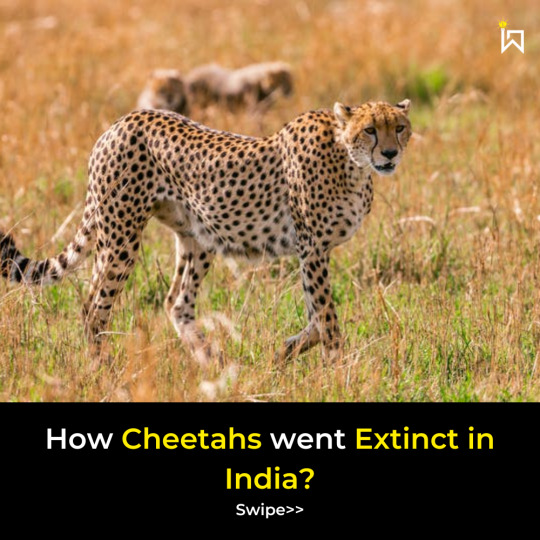



2 notes
·
View notes
Photo




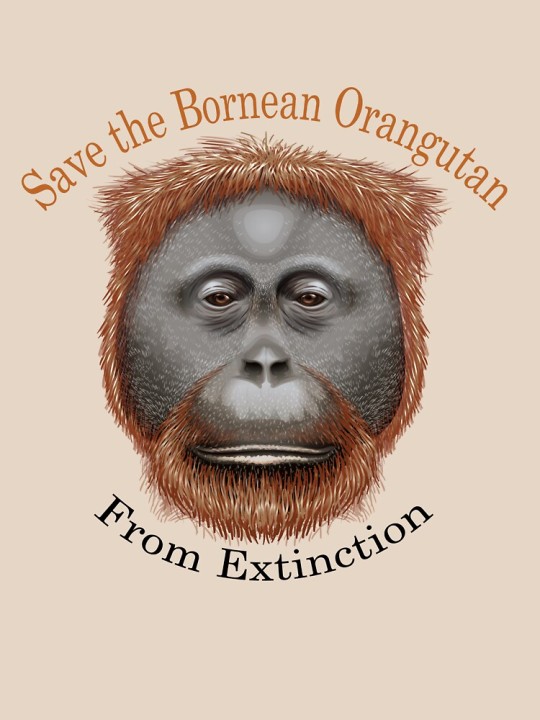
Save The Bornean Orangutan From Extinction Classic T-Shirt
#findyourthing#redbubble#bornean orangutan#extinction#animals#animals lover#save animals#bornean#orangutan#monkey island#monkey#animal safety#happy monkey#t-shirt#name association#association of american medical colleges#animal extinction#support animal
2 notes
·
View notes
Text
"The Last Dodo" is going to make me cry over Kakapos.
There's only 199 individuals alive right now :'(
2 notes
·
View notes
Text
i think the worst part abt being a furry and therefore being surrounded by furries is the lack of knowledge of animal welfare that the majority of the fandom has. nooo raccoon sona friend dont share that video of a raccoon being fed chips by a human person 😭😭😭
#the big cat petting videos as well#or the obese pet opossums#its not great out here!!!#i guess one pro to having a sona that is based off of an extinct animal is i literally will never see my sona animal being abused LOL
10K notes
·
View notes
Text

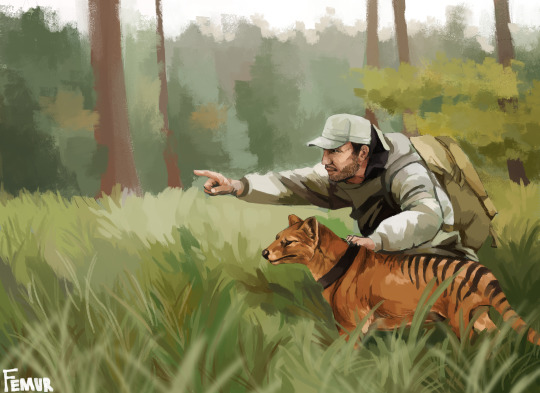
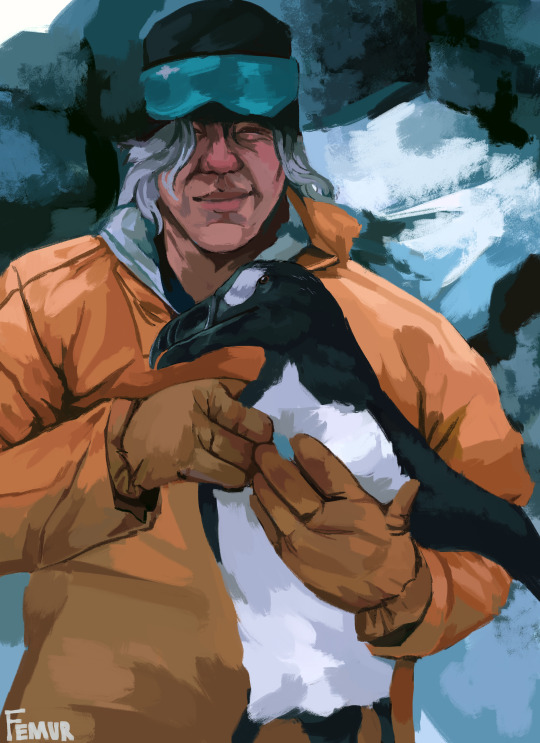
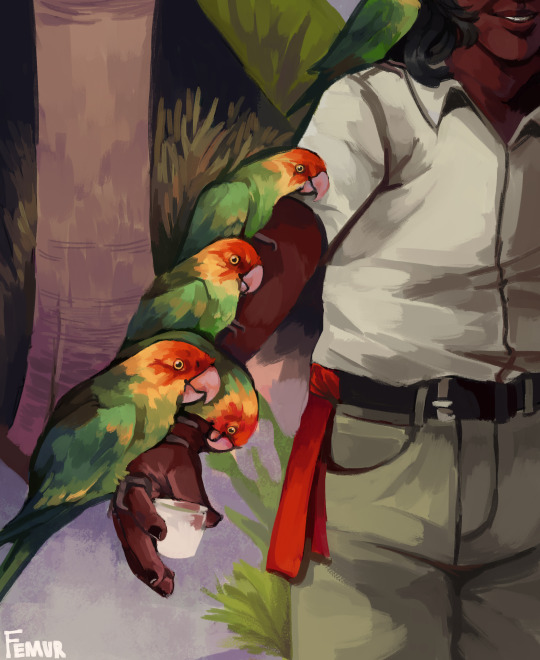
Something that could have been
#femurs art#carolina parakeet#quagga#great auk#extinct animals#extinct species#this was for a school thing#this series was made for ME#also this isnt supposed to be realistic#so like. i know that thylacines wouldnt make very good hunting companions but that wasnt the point of the piece#thylacine
17K notes
·
View notes
Text
It's not a bad thing that discussions about the thylacine are centered around grief, memory and (interestingly!) photographic data of the animal but it might be more productive to think about why and how it went extinct, which was to protect livestock, exacerbated by reward money implemented by the Australian state.

Wilfred Batty and the last wild Thylacine, 1930. Source Unknown?
This kind of pest control is also not unique to Australia at all and was fairly ubiquitous across the British Empire. For example, here are some types of game licenses issued for species of animals in North-Eastern Rhodesia in the early 20th century.
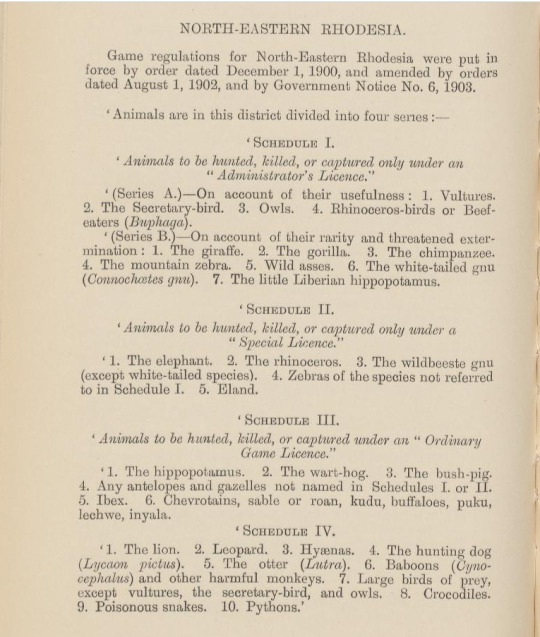
Source: Journal of the Society for the Preservation of the Wild Fauna of Empire 2 (1905): 74.
The Schedule IV animals, all predators and threats to livestock, are effectively free kills. Also note that each license came with a different price and number of kills permitted. The agricultural pest is a frightening thing to be.
If we'd really like to do more to prevent these sorts of things from happening, I think it might be more important to think about what we eat, why we eat it, where this food comes from, and how this food is legislated. You could always, of course, have a vulgar Marxist way of considering this extinction; farmers needed to make money by selling their chickens and poultry meat and by-products, which would feed a growing settler-colonial population which would continue to exploit the rural Australian landscape, and feed a generation of workers. Alternatively, we could also consider rural interests and issues of population growth as genuine care for one's family and their well-being, especially when nutritional diets were far scarcer back then than they are today.
In any case, after a consideration of these factors, it's wise to make careful decisions about the foods you eat, the land it takes to produce that, and how this land is used (usually legislatively). I personally keep a small garden that provides herbs and tomatoes till the spring of the following year. I'd love to raise chickens, but it's illegal in my very urban area. What could you do?
#thylacine#extinction#entries#animal extinction#animal control#animal conservation#dead animal tw#tw dead animal
1 note
·
View note
Text
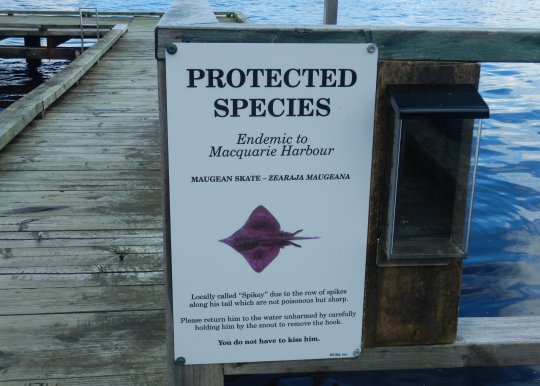

whag if i want to (macquarie harbour july 23)
eta the maugean skate is extremely endangered and facing immediate extinction and the government is the damn fucking liberals and they will not do anything about it. idk what any random people from across the world can do about it but im screaming crying sobbing begging for help
#whag if i want to#tjhe way they literally ONLY live in this one harbour... like whatever it is on that one rock#my photos#maugean skate#sea animals#endangered animals#tasmania#lutruwita#popular#i knew you people would love this#greatest hits#extinction studies
19K notes
·
View notes
Text
youtube
"11 years ago this topic came out that catapulted coldplay to the top, I mean paradise, it reflects the conservation of species and forced captivity as well as the hunting of species and their ivory, I hope you like the video, don't forget to subscribe and like the video.🎶 Over and out comrades!"
#biodiversity#animal extinction#climate change#climate crisis#paradise#jail climate criminals#climate criminals#we want climate action now#coldplay#espanol subtitulos#changement climatique#cambio climático#klimawandel#klimakatastrophe#Youtube
2 notes
·
View notes
Text
A study that just came out demonstrates that outdoor cats are known to prey on over two thousands species of wild animal, from mammals to birds to insects. That includes 347 species that are endangered, threatened or otherwise of concern, and they've been a key factor of the permanent extinction of over 60 species. And while cats may not always bring home what they catch, chances are if your cat is allowed to roam unsupervised outside, they're killing your local wildlife.
Why is this so important? Worldwide, wild animal populations have decreased in number by 69% in the past fifty years; that means that in my lifetime (born in 1978), the sheer number of wild animals in the world has been decreased by over half. Even "common" wild species are less numerous than before. While habitat population is the single biggest cause of species endangerment and extinction overall, outdoor and indoor/outdoor cats are a significant cause as well. In fact, they are the single biggest cause of human-caused mortality in wild birds.
Most importantly, it's very, very simple to fix this problem: keep your cats indoors, and spay and neuter them. If your cat is bored, they need more enrichment, and there are plenty of ways to make your home more exciting for them, from bringing home cardboard boxes for them to explore, to playing with them more often. If you want your cat to get some outdoor enrichment, leash train them (yes, it can be done!) If you have the space and resources, build them a catio where they can be safe from outdoor dangers like predators and cars, while also keeping local wildlife safe from them.
If you just give into their whining and pawing at the door, then they know that that's what they have to do to get their way; I know it's a tough transition, but it's worth it in the end for everyone involved. Cats are domesticated, which means they are not native anywhere in the world; there are exactly zero ecosystems in which they belong, save for the safety of your home. It is your responsibility to give them an enriching environment without taking the shortcut of letting them go wreak havoc outside.
#cats#outdoor cats#feral cats#nature#wildlife#animals#ecology#environment#conservation#science#scicomm#birds#endangered species#extinction#domesticated animals#domestication#biology#animal behavior#animal welfare
8K notes
·
View notes
Text
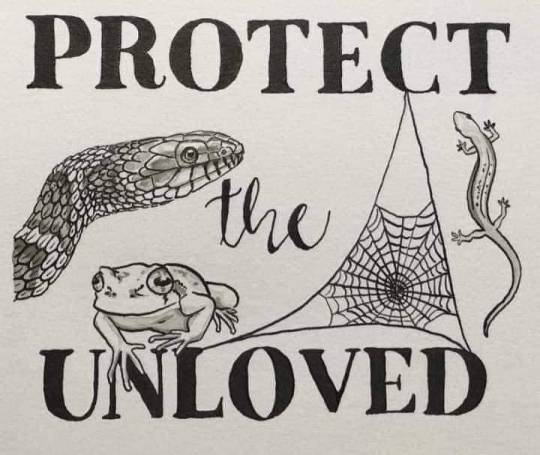
#environment#animals#snakes#frogs#newts#amphibians#endangered#love#extinct#conservation#nature#stolen#true#reptiles#spiders#arachnids
19K notes
·
View notes
Photo
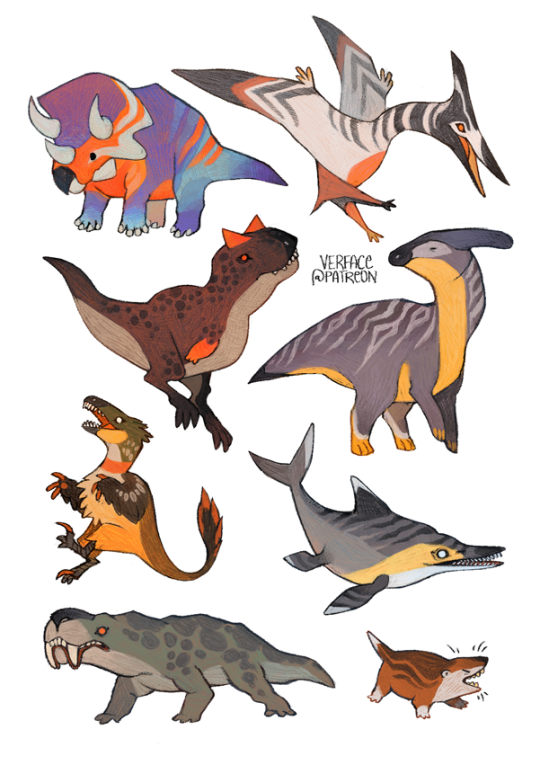
little cretaceous guys + guest appearance of our even older friend the gorgonpsid
(triceratops, pteradon, carnotaurus, parasaurolophus, deinonychus, ichthyosaur, gorgonopsid, repenomamus)
#paleoart#cretaceous#extinct#animal#triceratops#pteradon#carnotaurus#parasaurolophus#deinonychus#ichthyosaur#gorgonopsid#repenomamus
31K notes
·
View notes
Text


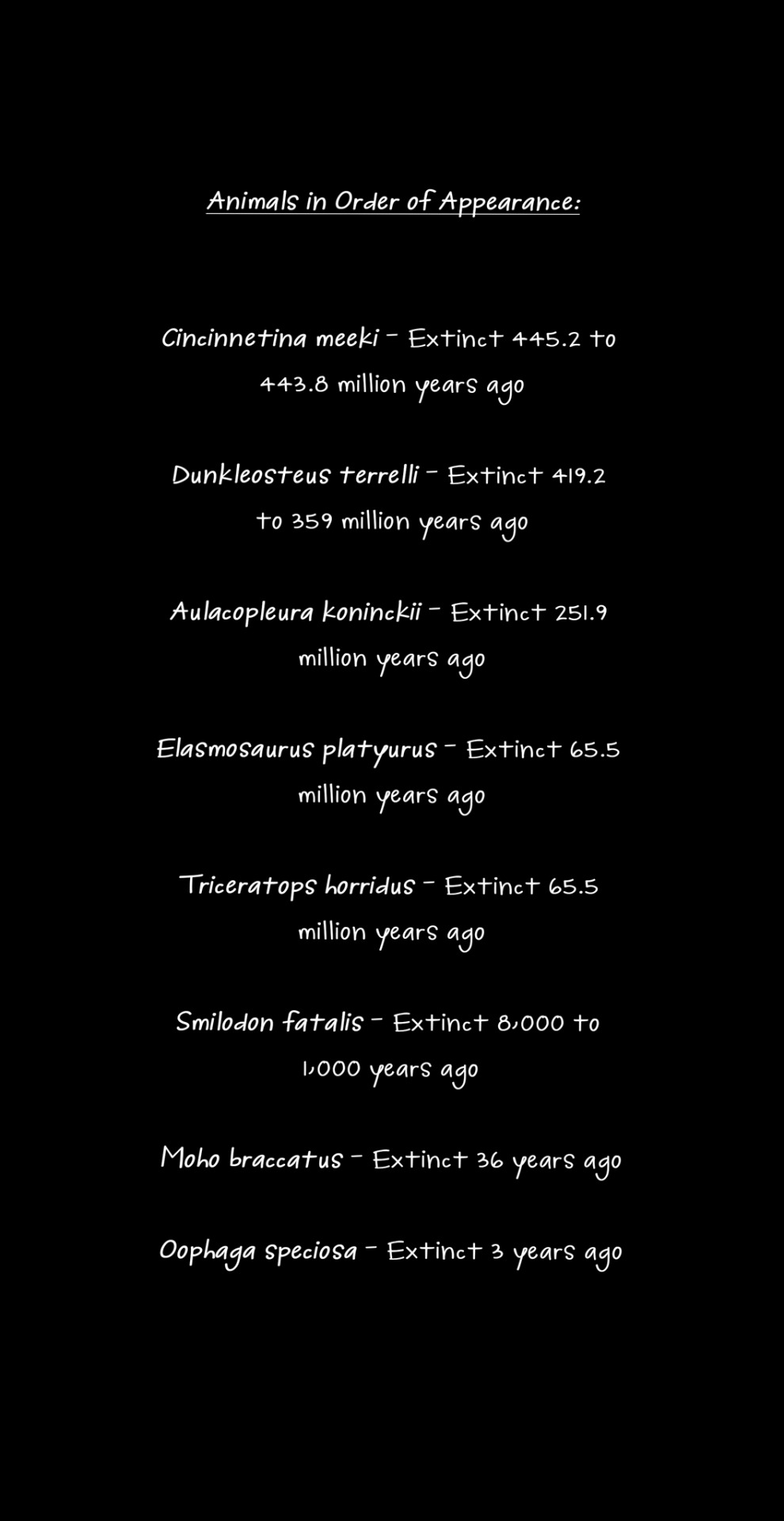

text from porter robinson's "goodbye to a world"
every single animal in this comic is extinct. it's not too late for the ones that are left.
edit: thanks @mudcrabmassacre for the correction, smilodon fatalis did not in fact go extinct in 1023 AD. the actual prediction is around 10,000 years ago - I think i may have missed a zero or two.
#comic#art#environment#conservation#animals#extinct species#fossils#climate change#dinosaurs#ancient life#endangered species#endangered animals#comics#artists on tumblr#digital art#digital comic#my-art
10K notes
·
View notes